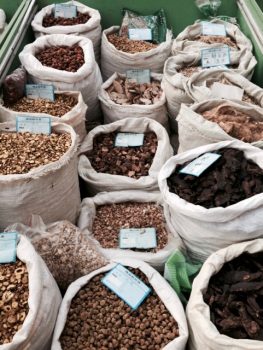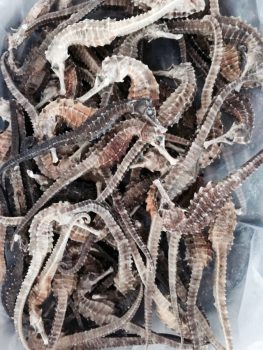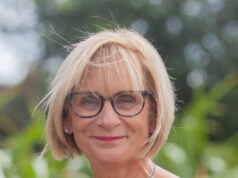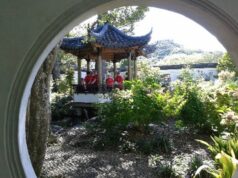
Fascinating facts and significant differences in attitude to health between New Zealand and China were highlighted during the visit to China by the New Zealand China Friendship Society’s Prominent Persons and Leaders Delegation (2015).
Each year, the New Zealand China Friendship Society (NZCFS) is invited by the National China People’s Association for Friendship with Foreign Countries (known as Youxie) to send a delegation of Prominent People and NZCFS Leaders to China. These delegates comprise both people from the community, such as teachers, local politicians and media people, as well as Society representatives.
The purpose of the delegation’s visit is to build relationships and friendships between our two peoples, to visit some unique parts of China, and to give the delegates a positive perspective of modern China. On alternate years, the delegation attends a Friendship Forum which is an opportunity to meet like delegations from many countries.
For the 1-page document provided to NZCFS delegates, for briefing on National Youxie, click here.
As the 2015 delegation focussed specifically on medicine, it comprised mainly doctors, a nurse and leaders in the health sector. A complete list of those who took part in the delegation can be found at the end of this article.
The delegation began the tour in Beijing where they visited a Traditional Chinese Medicine (TCM) hospital, which was established by top traditional medicine practitioners in the 1950s. In this hospital, and similar hospitals across China, there is a strong focus on the interaction between TCM and Western medicine. Contemporary doctors working in these hospitals train in both areas to broaden their understanding of medicine and health. During their time in Beijing, the delegates also visited Rewi Alley’s apartment [Ed: now part of the offices of Youxie], the Peace Park and the Great Wall.
Following their time in Beijing, the tour visited Shijiazhuang, the capital of Hebei province. The city has approximately 13 million people, and a key focus of their health initiatives involve providing healthcare for rural villages, including immunisations. Within Shijiazhuang, there is health insurance for most people, with five different levels of cover. The local government in the city aim to continue to improve access to healthcare within the province, as well as those with access to insurance. In addition to visiting hospitals in Shijiazhuang, the delegation also spent time in a number of museums, including the Hebei Regional Museum. Members of the tour also noted a number of similarities with New Zealand and Māori culture in the city, such as similar koru patterns and the prominence of greenstone compared to jade.
The delegation then visited Anguo, a city of nearly half a million people also in Hebei province. They visited both the old and new main hospitals, with the new hospital employing approximately 700 staff (compared to 5,000 in the Wellington hospital), and includes both traditional and western medicines. Following this, they visited the largest wholesale market of ‘materia medica’ for TCM [Traditional Chinese Medicine] in China, which provides a huge range of traditional medicines from across the country, including herbs, roots and dried sea life (see images below).
The following are some of the delegates’ comments on the places they visited and some of the statistics and health practices they were informed about, which often differed radically from those in New Zealand:
Ann Chapman (Owner of Fa Otaki Mail newspaper and retired community leader, who has over 20 years’ experience in governance roles in the health sector in the greater Wellington region):
Report to Dave Bromwich and the New Zealand China Friendship Society:
“Thank you for the opportunity to go to China – a long held dream now fulfilled.
“The overwhelming observation I take away with me is the absolute pride that the doctors, nurses and administrators showed as we toured round their hospitals and clinics. From the top-class city hospitals to the zero-ranked country clinics, we were treated with courtesy, our questions answered with the belief that their work mattered and was making a difference. Their welcome in neon lights above the two city hospitals saying ‘Welcome to the Medical Delegation from New Zealand’ was an example of how much they valued this visit.
“The use of Traditional Chinese Medicine was the focus of the trip and of interest was how it is used alongside traditional western medicine. As a user of acupuncture I was happy to be the exemplar for the rest of the delegation to observe. We all tried Chinese massage and pulsing – some of us were more sceptical than others. The herb market in Anguo was an eye-opener. What, I wondered, did they use dried ants, dried deer, dog penis and dried human placenta for? Could these be the topic for another visit perhaps?
“New Zealanders Rewi Alley and Kathleen Hall are still remembered with respect, even reverence, for the work they did. Anguo Hospital (originally the Christian Hospital where Kathleen worked) is now a big general second-tier hospital with a good reputation and a national award. It offers a full range of traditional and western medicines.
“We were royally wined and dined. As the oldest in the delegation I was honoured to be asked by Jan McLeod [leader of the delegation] to give the speech of thanks. Ben Grey sang the waiata. This was received very well by our hosts.”
Dr Ben Gray (Senior Lecturer in the Department of Primary Health Care and General Practice, Otago University):
Brief impressions of China:
“It was great being a part of the NZCFS medical-focussed delegation to China. The opportunity to be taken to both major tourist destinations and health care facilities was much appreciated.
“General impressions were of the size: of population, of geography, of length, of history. The traffic was remarkable in the way that despite all the pedestrians, cycles, motorised bikes, cars, trucks and buses, things moved apparently safely. It was disconcerting crossing an 8 lane street but all motorists just gave way. Notable has been the uptake of electric bicycles which are, of course, quiet. I suspect in the past that the noise of scooters and small motorbikes could have been annoying but the electric bikes were silent.
“The health system was particularly interesting with the combination of traditional Chinese medicine and western medicine and the challenge of providing care for so many people. Traditional medicine is embedded in the culture and supported by the government. Many doctors are trained in both modalities. They have recently extended health insurance to farmers and are expanding their health facilities. The new hospital in Anguo was impressive…although significantly understaffed compared to New Zealand standards. The facilities of the Township clinic (servicing 40,000) and village clinic (servicing around 1000 people) were particularly interesting. The hospital at Anguo talked of the problem of caring for people who could have been cared for at the township or village level but they have no expectation that people should go there first. They appeared to have good systems for immunisation and health screening.
“The market at Anguo for traditional Chinese medicines was remarkable, covering more than a hectare with many stores with many samples. Surrounding the market were warehouses from where the medicines are distributed.
“It is difficult to compare the Chinese health system with the New Zealand one: the number of people, the transport issues, the fact that China until recently has been a predominantly ‘third world’ country. Despite these challenges, the standard of care available seemed impressive.”
Ann Chapman and Ben Gray also gave an comparison of health statistics between New Zealand and China. For example, China spends 5.6 percent of its GDP on health, while New Zealand spends 10 percent. Life expectancy for the former is 75 years while the latter is 81 years. However, life expectancy varies within each country, depending on aspects such as gender and cultural group. They also spoke on the vast differences between the two countries, such as the scale of the infrastructure and the environmental challenges.
Chris Gaul (Registered Nurse):
“Since returning from the Prominent Persons and Leaders Tour in China, I have adopted the ‘prevention’ philosophy to mine and my family’s health and well being. I have taken up yoga which I also do with my 7 year old daughter. I did a short meditation and mindfulness course, which I have also introduced to my children. I am half way through studying for a Diploma in Reflexology which covers some of the Chinese theories and have just completed a Certificate in Aromatherapy! so I am either making potions or rubbing feet in order to keep us healthier!!
“Below are a number of photos I took whilst on the tour.”
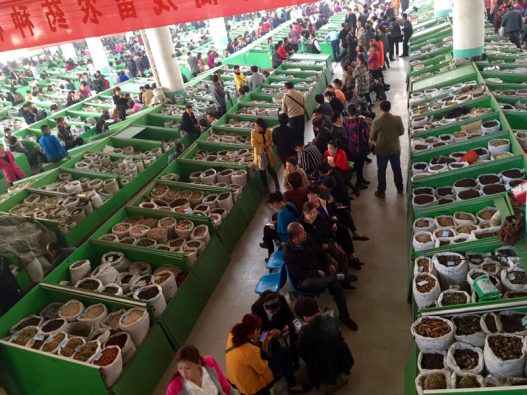
Jan McLeod (Leader of the Delegation):
“An Guo [安国 “Peaceful Land”] and its “materia medica” market is the largest in China, dating back hundreds of years. This has earned the town the nickname of “Yao Cheng” or Medicine City – they even have a temple to the God of Medicine! Anguo is deep in rural Hebei Province, North China, where most of Kathleen Hall’s work took place.
“In a sense, I suspect these factors may have been the very reason that the Anglican medical missionaries located their first “Western medicine” Hospital in Anguo Township, back in Kathleen’s day. Maybe it was even meant to be in opposition to TCM? An intriguing research topic for somebody…?
“Tom Newnham, John Parker and I actually visited the [very basic] old original hospital back in 1996 when aTV documentary was being made. Because the town has changed so much, I didn’t realise until the end of our recent visit that what we’d just seen was the ‘new’ hospital that replaced it, and beside it the even newer & very modern extension, just opened!
The Party Secretary told me they’d like to have some sort of memorial to Kathleen at the front entrance “to educate the public”, besides the community nursing program named for her.”
——-oOo——–
The Prominent Persons and Leaders Delegation (2015) comprised:
Leader of the delegation: Jan McLeod [member of Whanganui Branch], writer, retired Dance Teacher
Ann Chapman, Owner of Fa Otaki Mail newspaper and retired community leader, who has over 20 years’ experience in governance roles in the health sector in the greater Wellington region
Debbie Chin, Chief Executive of the Capital and Coast Region Health Board
Dr. Bernard Fanning, General Practitioner
Christine Gaul, Registered Nurse
Dr Ben Gray, Senior Lecturer in the Department of Primary Health Care and General Practice, Otago University, Wellington
Alison Hobbs, Company Director, Sonographer, Shiatsu practitioner.
This article is based on delegates’ comments and a newsletter report by Kirk MacDowall (NZCFS Wellington Branch)



